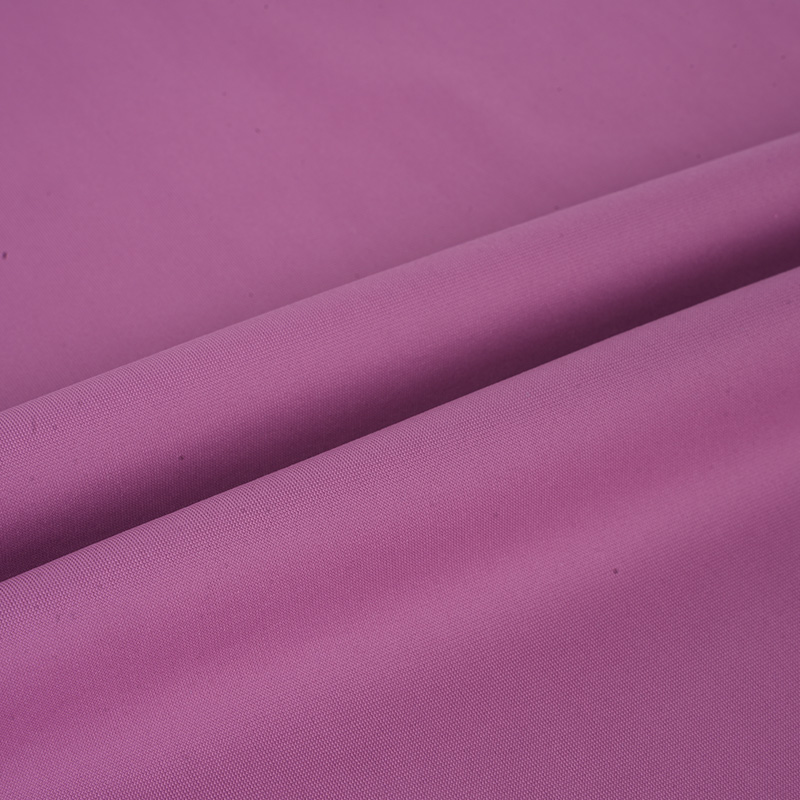We are located in Haining City, Zhejiang Province, one of China's famous knitting industrial Bases.
The key characteristics of activewear fabric are designed to enhance comfort, performance, and durability during physical activity. Here’s a breakdown of the most important features:
1. Moisture-Wicking
What it is: Activewear fabrics often have moisture-wicking properties, which means they pull sweat away from the skin and move it to the surface of the fabric, where it can evaporate more easily.
Why it matters: This helps keep you dry and comfortable during intense workouts, preventing the fabric from feeling heavy or uncomfortable. It also reduces the risk of skin irritation caused by prolonged moisture exposure.
2. Breathability
What it is: Breathable fabrics allow air to flow freely through them, helping to regulate body temperature during physical exertion.
Why it matters: Breathable activewear helps keep you cool by allowing heat and moisture to escape, preventing overheating, especially during outdoor or high-intensity activities.
3. Stretchability and Flexibility
What it is: Stretch fabrics like spandex or elastane are commonly blended with other materials in activewear to allow for a high degree of flexibility and movement.
Why it matters: Activewear needs to accommodate a wide range of motions without feeling restrictive. Stretchable fabrics provide comfort and support during activities like yoga, running, or cycling.
4. Durability
What it is: Activewear fabrics are made to withstand repeated use, frequent washing, and exposure to wear and tear.
Why it matters: Because activewear is subject to intense physical activity, the fabric must be durable enough to resist pilling, fading, and stretching out over time, maintaining its integrity and shape.
5. Compression
What it is: Compression fabrics fit tightly around the body, offering support to muscles and promoting better blood circulation.
Why it matters: Compression can enhance performance, reduce muscle fatigue, and help with recovery by improving blood flow. It also provides a flattering fit.
6. Lightweight
What it is: Many activewear fabrics are lightweight and designed to not weigh down the wearer during activities.
Why it matters: A lightweight fabric enhances mobility and ensures that the fabric doesn't restrict movement. It is ideal for high-performance sports and workouts where comfort and speed are crucial.
7. UV Protection
What it is: Some activewear fabrics are treated or inherently designed to block ultraviolet (UV) rays from the sun.
Why it matters: UV protection helps prevent skin damage during outdoor activities like running, hiking, or cycling, providing added protection against harmful rays.
8. Anti-Odor
What it is: Fabrics with anti-odor or antimicrobial treatments prevent the growth of bacteria that cause odor.
Why it matters: Activewear is often exposed to sweat and bacteria, and fabrics that resist odor build-up keep clothing fresher for longer, reducing the need for frequent washing.
9. Softness and Comfort
What it is: Activewear fabrics are designed to feel soft against the skin, preventing discomfort and irritation during physical activity.
Why it matters: Softness enhances overall comfort, allowing you to focus on your workout rather than on any itching or chafing.
10. Quick-Drying
What it is: Quick-drying fabrics are engineered to dry faster than standard fabrics, reducing the time spent in wet clothing.
Why it matters: This is crucial for avoiding prolonged discomfort and reducing the risk of chafing or irritation that could be caused by sweat-soaked clothing.
11. Shape Retention
What it is: Activewear fabrics often have the ability to retain their shape and resist sagging or stretching out, even after extensive wear.
Why it matters: Shape retention ensures that activewear stays form-fitting and supportive, maintaining a flattering silhouette over time.
12. Flexible Fit
What it is: Activewear fabrics are often engineered to mold to the body’s shape and movements, offering a comfortable, supportive fit without constricting or chafing.
Why it matters: A flexible fit ensures that the fabric doesn’t impede motion, making it ideal for dynamic, high-impact activities like running or lifting weights.
13. Sustainability
What it is: With an increased focus on sustainability, some activewear fabrics are made from recycled materials or eco-friendly fibers, such as recycled polyester or organic cotton.
Why it matters: Eco-friendly activewear helps reduce the environmental impact of manufacturing, offering a more sustainable option for consumers who are conscious of their carbon footprint.
14. Abrasion Resistance
What it is: Fabrics like nylon and polyester offer abrasion resistance, meaning they are less likely to fray, wear down, or tear from friction.
Why it matters: This quality is essential for activewear that will be exposed to rough conditions, such as outdoor sports, weightlifting, or other high-intensity activities.
15. Visual Appeal
What it is: Activewear fabrics can come in a range of colors, textures, and prints, allowing for stylish and functional designs.
Why it matters: In addition to performance, many consumers seek activewear that is visually appealing, whether for personal style, fashion, or matching gym wear.

Activewear fabric needs to offer a combination of performance, comfort, and durability. Key characteristics such as moisture-wicking, breathability, stretchability, and quick-drying properties make it ideal for physical activities, while additional features like UV protection, anti-odor technology, and sustainability contribute to its appeal in both performance and everyday wear.

 English
English  Español
Español  عربى
عربى 













